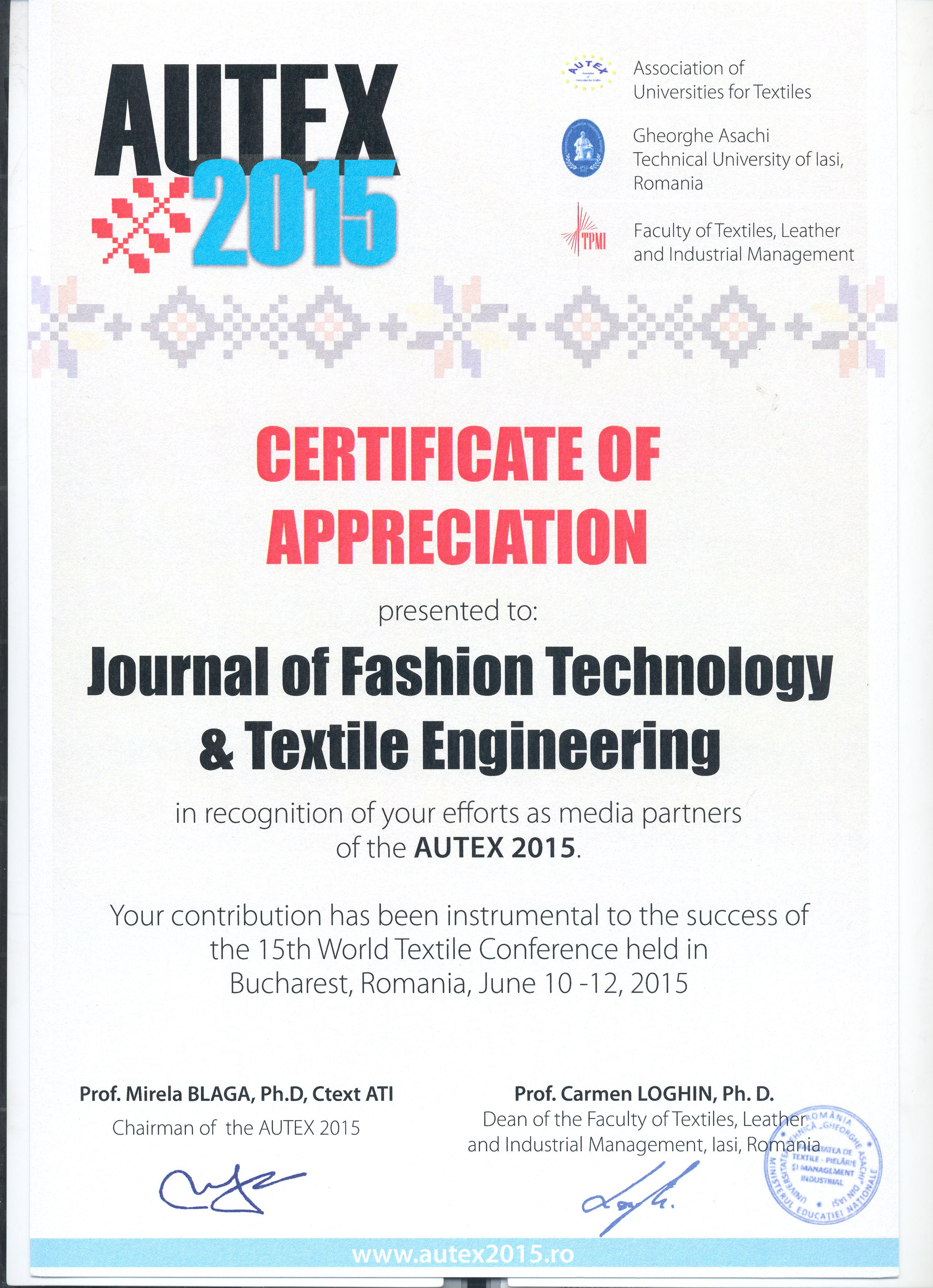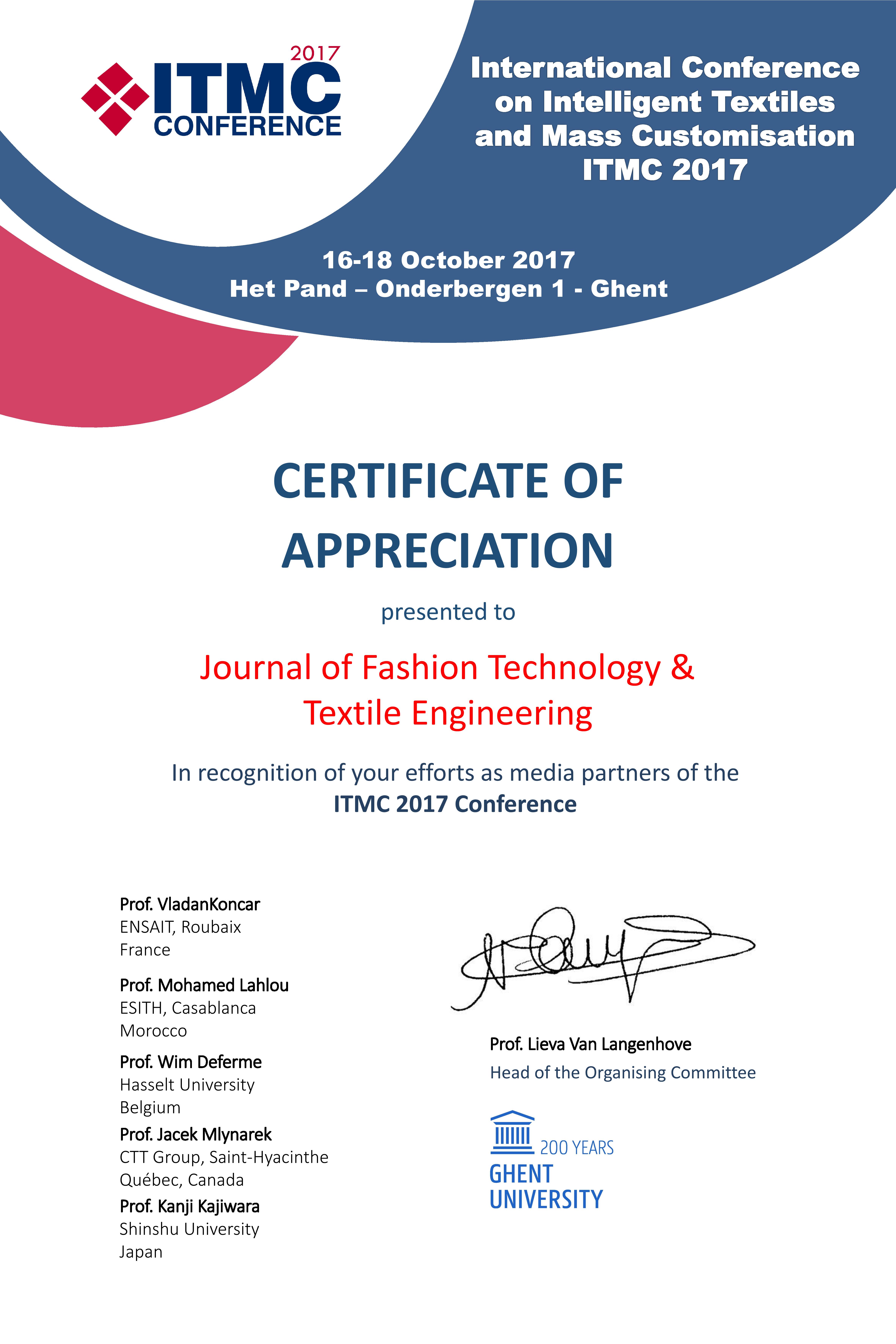Opinion Article, J Fashion Technol Textile Vol: 12 Issue: 6
Maggam Technique: A Study of Traditional Indian Embroidery in Modern Fashion
Poojith Sen*
1Department of Fashion Studies, London College of Fashion, London, United Kingdom
*Corresponding Author: Poojith Sen,
Department of Fashion Studies, London
College of Fashion, London, United Kingdom
E-mail: poojith_sen@gmail.com
Received date: 26 November, 2024, Manuscript No. JFTTE-24-155265;
Editor assigned date: 28 November, 2024, PreQC No. JFTTE-24-155265 (PQ);
Reviewed date: 12 December, 2024, QC No. JFTTE-24-155265;
Revised date: 20 December, 2024, Manuscript No. JFTTE-24-155265 (R);
Published date: 27 December, 2024, DOI: 10.4172/2329-9568.1000387.
Citation: Sen P (2024) Maggam Technique: A Study of Traditional Indian Embroidery in Modern Fashion. J Fashion Technol Textile 12:6.
Description
The maggam technique is a complex and highly skilled form of embroidery that has been part of traditional textile design for centuries. Originating in India, particularly in regions like Andhra Pradesh and Telangana, this hand-embroidery technique is known for its elaborate and decorative stitch work that embellishes fabrics, primarily for bridal wear, sarees and other ceremonial garments. The art form is distinct for its use of vibrant threads, mirrors and beadwork making it a prominent feature in Indian fashion, especially in wedding attire. Blending traditional methods with modern aesthetics to produce complex and luxurious designs that showcase the craftsmanship and cultural heritage behind this technique.
The maggam technique is characterized by the use of a needle and thread to stitch detailed patterns and themes onto fabric. The embroidery involves various types of stitches, such as chain stitch, French knots and satin stitch, among others, which are combined to form complex designs. These designs are often symbolic, reflecting cultural significance and tradition, with patterns that include florals, geometric shapes and nature-inspired themes. The fabric used in maggam embroidery is typically silk, georgette, or cotton, which serves as the perfect base for the technique due to its ability to embrace the intricate stitches and shine through the vibrant threads and embellishments.
One of the most amazing aspects of the maggam technique is its use of additions such as mirrors, beads and sequins, which add a three dimensional quality to the embroidery. These add-ons are carefully stitched onto the fabric, highlighting the design and giving the embroidery a rich. The addition of mirrors, which reflect light, is symbolic in many Indian traditions, as it is believed to ward off evil spirits and bring positivity. The complex beadwork and sequins further enhance the texture and visual appeal of the embroidery, making it suitable for festive occasions and grand celebrations.
The maggam technique is traditionally done by skilled artisans have inherited this craft over generations. The process is time-consuming and requires exceptional attention to detail, as the entire design is meticulously hand-stitched. It often takes weeks, or even months, to complete a single garment, depending on the complexity and size of the design. The precision involved in producing the patterns and stitches requires years of training and practice and artisans are highly regarded for their knowledge in this craft. While the technique has deep cultural roots, it has also adapted to modern trends, with designers including maggam work into modern fashion collections and experimenting with new color combinations and materials.
In recent years, the popularity of the maggam technique has grown beyond traditional markets, with designers including it into modern fashion pieces. The technique is now being used on various types of garments, such as modern dresses, blouses and even accessories like bags and shoes. Fashion designers are increasingly blending traditional embroidery with modern cuts and styles to produce unique pieces that appearance to a global audience. The fusion of old and new in maggam embroidery allows it to maintain its cultural significance while remaining relevant in the modern fashion world.
Conclusion
In conclusion, the maggam technique is a beautiful and complex form of embroidery, reflecting the rich cultural heritage and artistic craftsmanship of India. Its use of vibrant threads, mirrors, beads and sequins produces stunning visual effects that make it a fashionable design technique in both traditional and contemporary fashion. As the industry continues to change, it is vital to preserve such traditional techniques and ensure that they are innate to future generations. Many organizations and designers are working to support artisans and ensure that they are compensated fairly for their work. Additionally, there is a growing movement towards stimulating traditional techniques and promoting sustainable fashion, which has led to a new interest in handcrafted and artisanal products.
 Spanish
Spanish  Chinese
Chinese  Russian
Russian  German
German  French
French  Japanese
Japanese  Portuguese
Portuguese  Hindi
Hindi 


